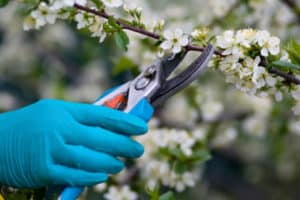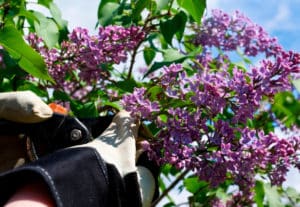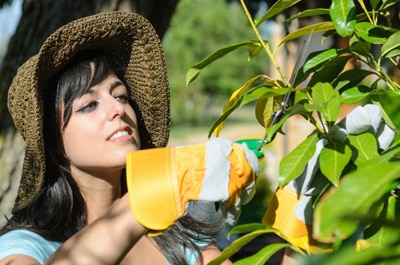Pruning spring-blooming shrubs and small trees is a simple task that can produce big results. Trimming back leads to more vigorous, healthy growth and provides a good opportunity to shape plants as you desire. To successfully prune spring-flowering shrubs, keep the following tips in mind.
When to prune spring-blooming shrubs and small trees
Soon after most spring-blooming shrubs and small trees finish flowering, they begin producing growth on which they will grow next year’s flowers. For this reason, it’s important that you time pruning so that you don’t remove any growth that contains latent buds. With most flowering shrubs, it’s safest to prune right after blooming finishes in early summer.
Pruning tools
To quickly and easily prune shrubs and small trees, you’ll need several tools on hand. These include pruning shears, lopping shears and a pruning or bow saw. After pruning, sterilize the tools with a 10 percent bleach to 90 percent water solution. Coat the pruning tools with a light lubricant after cleaning.
How to prune shrubs and small trees
To successfully prune, follow these steps:
- Remove growth so that there are no crossing or rubbing branches.
- Trim long, unbranched stems by cutting them back by one-third and trimming just above a bud. This encourages the plant to grow at that point and produce lower side branches.
- Thin out old or weak branches, which opens up the plant to more sunlight and growth. Such thinning also creates more air circulation for the tree or shrub, which helps deter pests and causes more vigorous growth.
- For shrubs with multiple stems coming up from the ground, such as lilac, forsythia, dogwood and viburnum, remove all of the old stems, leaving the new ones, which will create refreshed, vigorous growth.
- When pruning small trees, remove suckers growing from the base of the trunk or the roots, as these will weaken the tree. Also saw or cut out sagging limbs growing close to the ground and limbs that are diseased, dead or broken.
- To prune small branches, cut back to just above a healthy, vigorous bud or to an intersecting branch. Prune to a bud that is pointing in the direction in which you want the plant to grow.
- To remove entire limbs, cut close to the branch collar, which is the swollen bark where the limb meets the stem or trunk. Always make clean cuts, as jagged ones can invite pests and diseases.
Work slowly when you prune. When you finish, your goal is a shrub or small tree that does not appear overly pruned. Stop and examine your pruning job as you work, which will help prevent harmful and aesthetically unpleasant excessive pruning.



